|
The study investigated teacher knowledge of error analysis in differential calculus. Two teachers were the sample of the study: one a subject specialist and the other a mathematics education specialist. Questionnaires and interviews were used for data collection. The findings of the study reflect that the teachers’ knowledge of error analysis was characterised by the following assertions, which are backed up with some evidence: (1) teachers identified the errors correctly, (2) the generalised error identification resulted in opaque analysis, (3) some of the identified errors were not interpreted from multiple perspectives, (4) teachers’ evaluation of errors was either local or global and (5) in remedying errors accuracy and efficiency were emphasised more than conceptual understanding. The implications of the findings of the study for teaching include engaging in error analysis continuously as this is one way of improving knowledge for teaching.
Aside from the challenges of a variety and the complexities of students’ errors, analysing such errors is a fundamental aspect of teaching for mathematics teachers (Ball, Thames & Phelps, 2008; Brodie, 2014; Legutko, 2008; Makonye, 2012; Olivier, 1989; Peng & Luo, 2009; Shalem, Sapire & Sorto, 2014). Students’ errors are complex because they are a function of many variables. They may originate from the students themselves, the teachers, the curriculum, the environment or the interaction amongst these variables (Radatz, 1979). So it is difficult to impute an error to any one variable. The way students build up their knowledge is also complex. The constructivist views of learning assert that students learn by transforming and refining their prior knowledge into more sophisticated concepts (Smith, DiSessa & Roschelle, 1993). So the understanding that prior knowledge is the main resource of knowledge construction is necessary for the teacher. The teacher also needs to understand that this prior knowledge has conceptions that may conflict with the new ideas that the teacher hopes students will learn (Davis & Vinner, 1986). Effective teaching therefore requires a teacher with the understanding that some conceptions though flawed in one context may be productive in another (Brousseau, 1997; Smith et al., 1993). The task of identifying such contexts is important to the teacher so that students are not encouraged to make errors that are a result of an overgeneralisation of certain conceptions.
Statement of the problem
‘Calculus is an important subject area within mathematics, and this underlies the argument for introducing it to non-specialists’ (Orton, 1983, p. 235). However, students continue to encounter problems in learning some of its basic concepts (Makonye, 2012; Orton, 1983; Thompson, 1994). This has called to the attention of both the mathematics educators and researchers the need to find ways in which mathematics teaching may be improved (Ball et al., 2008; Brodie, 2014; Legutko, 2008; Olivier, 1989; Shalem et al., 2014). As in other parts of the world students at the National University of Lesotho encounter problems in their learning of calculus and in most cases some of the reasons that are given for bad performance in the departmental meetings include: ‘[W]e have poor quality of students’, ‘students are lazy to learn’ and ‘students are not serious about their studies’. Whilst to some extent these may be true we cannot totally place the blame of poor performance on students alone; in one way or another teachers may also contribute. Over the years we have observed that when teachers mark students’ work the focus is more on the correctness or incorrectness of an answer: where the student has committed an error that stage will be marked with a cross and where the correct answer is given a tick is put instead. Teachers seem to be less concerned about knowing the origin of errors. The question to ask is: how effective can teaching be in remedying an error that has not been diagnosed? As highlighted earlier students’ errors are a function of many variables such as the student, the teacher, the curriculum, the environment and their interaction, but as a matter of focus we concentrated on just one variable, the teacher, by engaging in a study that has the potential to improve teachers’ knowledge of teaching. Since error analysis is one way to contribute to effective teaching of mathematics (Brodie, 2014; Moru & Qhobela, 2013; Olivier, 1989; Peng & Luo, 2009; Shalem et al., 2014), we thought that engaging in a study that investigated teacher knowledge of error analysis would be of help in alleviating the problem. This is because engaging in such a study would force teachers to think deeply about the errors students commit not only in calculus but in other courses as well. Sharing ideas during the development of the article would also force teachers to start talking about students’ errors and may thus cause them to start paying attention to them. The hope is that once a teacher is introduced to an effective way of teaching, they would start looking for more ways of effective teaching. Hence, these may help in alleviating the problem of unsatisfactory performance by students in mathematics.
The main research question for the reported study is: What teacher knowledge of error analysis do the teachers possess? In particular:
-
How do the teachers identify students’ errors?
-
How do the teachers interpret students’ errors?
-
How do the teachers evaluate students’ errors?
-
How do the teachers remedy the students’ errors?
The four sub-questions above are in line with Peng and Luo's (2009) four error phrases for error analysis, which are used in the study. These are: identify, interpret, evaluate and remediate. Identification means knowing of the existence of the error. Interpreting the error means knowing the underlying rationality or the possible causes of an error; evaluation involves assessing students’ levels of performance according to the error and remediation demands presentation of teaching strategy to eliminate the error.
|
Theoretical considerations and literature review
|
|
This section discusses the key ideas needed in the interpretation of the results of the study, namely error types in mathematics, students’ errors in differential calculus, teacher knowledge and teacher knowledge for error analysis.
Error types in mathematics
Olivier (1989) differentiates errors from slips and misconceptions. He defines an error as wrong answers due to planning that are systematic in that they are applied regularly in the same circumstances. Slips on the other hand are described as wrong answers due to processing. Unlike errors they are not systematic but are sporadically and carelessly made by both experts and novices. They are easily detected and corrected. Misconceptions are referred to as underlying conceptual structures that give rise to errors. Thus it could be argued that errors are indicators of the existence of misconceptions. This is the sense in which errors will be perceived in this article.
Errors have been classified differently by various researchers and mathematics educators. Legutko (2008) classifies them as mathematical and didactical:
A mathematical error is made by a person (student, teacher) who in a given moment considers as true an untrue mathematical sentence or considers an untrue sentence as mathematically true. Didactic errors refer to a situation when teachers’ behavior is contradictory to the didactic, methodological and common sense guidelines. (p. 149)
Mathematical errors include giving an incorrect definition of a mathematical concept and a wrong application of the definition, making a generalisation after observing a few particular cases and incorrect use of mathematical terms. Didactical errors include unsuitable selection of examples used in the formation of a concept, incoherent structure of teaching such as teaching concepts of a higher order before concepts of lower order.
Orton (1983) classified mathematical errors as structural, executive and arbitrary:
Structural errors were described as those which arose from some failure to appreciate the relationships involved in the problem or to grasp some principle essential to solution. Executive errors were those which involved failure to carry out manipulations, though the principles involved may have been understood. Arbitrary errors were said to be those in which the subject behaved arbitrarily and failed to take account of the constraints laid down in what was given. (p. 4)
Mathematical errors may also be procedural or conceptual (Eisenhart et al., 1993; Long, 2005; Shalem et al., 2014). Procedural errors are associated with procedural knowledge and conceptual errors are associated with conceptual knowledge.
Procedural knowledge refers to mastery of computational skills and knowledge of procedures for identifying mathematical components, algorithms, and definitions. … Conceptual knowledge refers to knowledge of the underlying structure of mathematics – the relationships and interconnections of ideas that explain and give meaning to mathematical procedures. (Eisenhart et al., 1993, p. 9)
To these we can add that procedural knowledge has two components: (1) knowledge of the format and syntax of the symbol representation system and (2) knowledge of rules and algorithms, some of which are symbolic, that can be used to complete mathematical tasks. It could therefore be argued that ‘the fluent execution of algorithm represents an aspect of procedural fluency’ (Long, 2005, p. 63). However, algorithms in themselves cannot be said to be devoid of mathematical concepts and if conceptual features inherent in the algorithms are not fully grasped, errors are likely to occur (Long, 2005). This suggests that it is not easy to categorise an error as either conceptual or procedural. The categorisation given to an error therefore has to be supported by a justification, which may clarify how the classification has come about.
Students’ errors in differential calculus
In a study by Orton (1983) students were asked to find the stationary points of the curve y=x3 − 3x2 + 4, that is, the points on the graph where the gradient is zero. Students in this study managed to find the gradient function (the derivative) f′(x) = 3x2−6x, but in solving for x values of stationary points in 3x2 − 6x − 0, 24 students out of 110 solved the equation incorrectly. Half (12) of the 24 students lost one solution x = 0 by dividing throughout by x to get 3x − 6 = 0 whilst six incorrectly factored 3x2 − 6x = 0 into 3x(x − 6) = 0 Students who lost one solution were not aware that dividing both sides of an equation by an expression involving a variable may not produce equivalent equations. The equation 3x2 − 6x = 0 has two solutions, x = 0 and x = 2, from 3x(x − 2) = 0 whilst 3x − 6 = 0 has only one solution, x = 2 and is therefore not equivalent to 3x2 − 6x = 0 Thus, the errors were classified as both structural and executive. An executive error was further committed when finding the gradient of the tangent to the curve at x = 3: although the 3 was substituted correctly numerical manipulations were incorrect.
In a differentiation task of the same study when expanding 3(a + h)2 students lost the middle term 6ah, this was possibly due to the fact that in most cases students’ expansion of (a + h)2 is given as a2 + h2. Students distribute the power over the brackets as would be the case in (ah)2 = a2h2. Students should have thought in reverse by realising that in real numbers one cannot find the factors of the sum of two squares. But in complex numbers such roots would exist because (a + hi) (a − hi) = a2 + h2 since by definition i2 = −1.
In a study by Thompson (1994) students interpreted the difference quotient
 an average rate of change or the gradient over an interval, as the derivative instead of the derivative being defined as an average rate of change or the gradient over an interval, as the derivative instead of the derivative being defined as
 an instantaneous rate of change or the gradient at a point. In Makonye (2012) students were asked to find the derivative of f(x) = −3x2 from the first principles (i.e. using the definition of derivative); the students failed to make proper substitution for f(x + h). For example, instead of substituting −3(x + h)2 for f(x + h), they substituted −x(x + h − 3) Students had a problem with evaluating function values. In the same study when finding the gradient of the tangent line (the derivative) to the curve at point, the gradient of the chord (a portion of the secant line), which is the average rate of change, was computed instead. This matches with the results of Thompson's study where the difference quotient used to an instantaneous rate of change or the gradient at a point. In Makonye (2012) students were asked to find the derivative of f(x) = −3x2 from the first principles (i.e. using the definition of derivative); the students failed to make proper substitution for f(x + h). For example, instead of substituting −3(x + h)2 for f(x + h), they substituted −x(x + h − 3) Students had a problem with evaluating function values. In the same study when finding the gradient of the tangent line (the derivative) to the curve at point, the gradient of the chord (a portion of the secant line), which is the average rate of change, was computed instead. This matches with the results of Thompson's study where the difference quotient used to
 find the gradient of the chord was interpreted as the derivative, which is the limit of the difference quotient as
find the gradient of the chord was interpreted as the derivative, which is the limit of the difference quotient as
Teacher knowledge
The two kinds of teacher knowledge that have received much attention in the work of Shulman (1986, 1987) are subject matter content knowledge (SMK) and pedagogical content knowledge (PCK). In differentiating between the two kinds of knowledge, Shulman defines SMK as the amount and organisation of knowledge in the mind of the teacher. This type of knowledge he suggests may be equal to that of a colleague who is a subject matter major whereas PCK goes beyond the subject matter to the dimension of subject matter knowledge for teaching. He defines PCK as follows:
It represents the blending of content and pedagogy into an understanding of how particular topics, problems, or issues are organized, represented, and adapted to the diverse interests and abilities of learners, and presented for instruction. (Shulman, 1987, p. 8)
This seems to suggest that SMK is necessary in teaching but it is not a sufficient condition. For SMK to operate in teaching it must be blended with pedagogy. In teaching, for example when a teacher uses a representation in explaining a concept, it means that one can now talk about the knowledge of teaching as the activity is now beyond a mere possession of subject matter knowledge.
Ball et al. (2008) developed a practice-based theory of content knowledge for teaching from the work of Shulman. Their research findings indicate that PCK has at least two sub-domains, knowledge of content and students and knowledge of content and teaching, whilst SMK could be divided into common content knowledge and specialised content knowledge. They define common content knowledge as the mathematical knowledge and skill used in settings other than teaching, which involves knowing the material to be taught and recognising when students give wrong answers or when the textbook gives an inaccurate definition. Being able to size up the nature or cause of an error, in particular an unfamiliar error, belongs to specialised content knowledge. Familiarity with common students’ errors and deciding which of the several errors students are likely to commit are examples of knowledge of content and students. It also involves knowledge of common students’ conceptions and misconceptions about mathematical content. Someone with knowledge of content and teaching can sequence topics, choose examples to use in deepening students’ understanding and evaluate the advantages and disadvantages of representations used to teach a specific area and identify what different methods and procedures are appropriate for instruction.
According to Moru and Qhobela (2013) teacher knowledge of error analysis should also include multiple interpretations of students’ errors. This is because students have diverse experiences and ways of thinking; hence, it is not always possible for the same error to originate from the same source. Multiple interpretations will accommodate a variety of remedial strategies. They add that such knowledge should also involve asking students to explain their answers because correct answers may even originate from incorrect steps or procedures. However, the opportunity for students to explain their answers is not always possible, especially with large class sizes or when someone is marking an assignment in the absence of students; hence, a teacher should also be able to contemplate the sources of such errors.
Shalem et al.'s (2014) elements for error analysis include awareness of an error, diagnostic reasoning of learners’ thinking in relation to an error, use of everyday links in explanations of errors and multiple explanations of errors. These elements overlap with Peng and Luo's (2009) identification and interpretation and Moru and Qhobela's (2013) interpretation of an error from multiple perspectives. The use of everyday links in explanations of error is very important because new knowledge is built on the already existing conceptual structure of which everyday experiences are part.
Teacher knowledge for error analysis
In investigating teacher knowledge for error analysis, Peng and Luo (2009) used the four error phrases identify, interpret, evaluate and remediate. In their study, they found out that teachers managed to identify a student's error, ‘but interpreted it with wrong mathematical knowledge, which led to meaningless evaluation of the student’ performance and unspecific presentation of teaching strategy’ (p. 24). In the same study, the task given to students was: If
 and and
 calculate calculate
 From the given information the student constructed the equations From the given information the student constructed the equations
 and and
 , then solved simultaneously. The teachers were aware that according to the rules of limits the constructed equations were incorrect. They however objected to their use with improper reasoning.
, then solved simultaneously. The teachers were aware that according to the rules of limits the constructed equations were incorrect. They however objected to their use with improper reasoning.
In a study by Moru and Qhobela (2013) teachers were given an opportunity to analyse some common student errors in sets. In this study teachers managed to identify the errors of the content they were familiar with (e.g. empty set, union of sets, intersection of sets, etc.); they however failed to identify errors for the content that they were not familiar with (e.g. treating infinity as a number and cardinality of infinite sets). Depending on the nature of students’ tasks teachers’ strategies and explanations of dealing with the errors were inclined towards calling on procedural knowledge. Only a few cases of conceptual knowledge were noted. In a study by Turnuklu and Yesildere (2007) teachers had sound subject matter knowledge of primary mathematics (directed numbers and fractions), but did not have adequate knowledge for the teaching of mathematics, which implies that having a deep understanding of mathematical knowledge is necessary but not sufficient to teach mathematics.
The sample
The sample consisted of two lecturers who are also the co-authors of this article. These lecturers were involved in the teaching of calculus in the Department of Mathematics and Computer Science at a university in Lesotho. Both lecturers (abbreviated T1 and T2) had also conducted tutorials for social science students. Their teaching experience ranged from two to three years. T1 is a subject matter specialist whilst T2 is a mathematics education specialist. Because lecturing is a form of teaching, the lecturers are sometimes referred to as teachers in this article.
Questionnaires
The first draft of the questionnaire was constructed by the first author. The second author critiqued the questionnaire and continuous discussions occurred between them until the final draft was arrived at. The questionnaire was administered by the first author. Each research participant (T1 and T2) had one month to complete the questionnaire as it was very demanding in terms of time and thinking. The questionnaire consisted of errors committed by the majority of second-year social science students taught by the first author. In total, 103 students sat the course examination. The examination was taken in May 2013. In the teaching the students had covered amongst others the following content: concept of limits, definition of derivative and finding the derivatives of functions either by the use of the definition or by differentiation rules, geometrical and algebraic interpretation of derivatives as gradient functions and finding equations of tangent lines to the curve. The questions in which the students committed most errors in the examination are:
Almost half of the students (49%) committed errors when responding to Question 1 and 61 students (59%) committed errors when responding to Question 2. The sample student responses were chosen by the first and the second authors who further selected the scripts in such a way that there was some variation in the committed errors.
For teachers’ analysis of students’ errors the teachers were given a questionnaire consisting of a question and the corresponding student response. They were asked to study the question and the corresponding student response and then asked to perform the following tasks: (1) identify the error, (2) write the possible causes of the identified error(s), (3) show how the identified error can impact on the mathematical performance of the student either in doing or learning mathematics and (4) suggest the strategies or explanation that one would provide in remedying the error.
Interviews
The follow-up structured interviews were constructed and conducted by the first author. The interviews emerged from the teachers’ responses to the questionnaire. These were conducted with the intention of seeking clarification on some questionnaire responses. The expectation was that these interviews would also start a conversation amongst colleagues about the importance of paying attention to students’ errors. The interviews for teacher knowledge of error analysis for each question were held separately with the individual lecturers (T1 and T2). On average the first stage took one and a half hours and the second just one hour. This was with the intention of achieving in-depth data with regard to the teachers’ knowledge of analysis of students’ error.
Data analysis
The analysis of the teachers’ knowledge of students’ errors was done by the first and the second authors. They were investigated in their ability to: (1) identify the error, (2) suggest the possible causes of the error, (3) judge how the error may impact on the performance of the student in doing or learning mathematics and (4) offer remedial strategies for the errors. After studying the teacher knowledge for error analysis, assertions for the displayed knowledge were constructed.
Permission to use students’ examination scripts was sought from the head of the Department of Mathematics and Computer Science. This is because students’ examination scripts are the property of the university. The agreement made was to conceal the students’ identities. With regard to the involvement of T1 and T2 their informed consent was sought by the first author.
Data was collected by the first author for both the questionnaires and interviews. This is because the first author had already established a rapport with the two lecturers who are not only colleagues in the department but also former students of the first author. To ensure reliability of the research instruments the second author assessed the clarity of the questions to see if they would be interpreted the same by different people for consistency of results. The suggested comments were discussed until an agreement was reached. T1's and T2's responses to the questionnaire and interviews show that the study did produce consistent results. This is because the two lecturers interpreted the questions and instructions in the questionnaire and interviews in the intended way.
In order to verify the validity of the questionnaire, it was given to the second author together with the research questions and the four error phrases by Peng and Luo (2009) to assess if the questionnaire had the potential to provide data that could answer the research questions and also to see if the potential data could be explained in terms of the four error phrases. Author 3 and Author 4 (T1 and T2) were not involved at this stage as they were the sample of the study. Questionnaires and interviews were used to allow their data to complement each other. After the first stage of data analysis, which involved the first and the second author, each teacher was given the first draft of the article. The teachers were asked to check if the interpretation given represented their views (respondent validity). They were asked to point at areas where they felt the analysis was not a true reflection of their work. The process was repeated twice. During the last stage each member of the research team was given the document to judge coherence and inconsistencies, if any. Low inference descriptors were also used (Seale, 1999). These include
verbatim accounts of what people say, for example, rather than the researchers’ reconstructions of the general sense of what a person said, which would allow researchers’ personal perspectives to influence the reporting. (Seale, 1999, p. 148)
Data analysis of teacher knowledge of error analysis yielded the following five assertions: (1) teachers identified the errors correctly, (2) the generalised error identification resulted in opaque analysis, (3) some of the identified errors were not interpreted from multiple perspectives, (4) teachers’ evaluation of students’ errors was either local or global and (5) in remedying errors accuracy and efficiency were emphasised more than conceptual understanding. The presentation follows the order in which the assertions have been listed.
Teachers identified the errors correctly
In all students’ work, the teachers managed to identify almost all the errors. A few that were left during the completion of the questionnaire were recovered during the interviews. This was a sign that failure to identify the errors in the first stage of data collection was not a sign of lack of knowledge but just a slip on the part of the teachers. The first example (see Figure 1) shows how one of the errors left out was recovered by T2 when discussing his analysis of S74's work. This will be followed by an example from S61's work showing how T1 recovered the errors he had not identified during the first stage of data collection.
The question asked is now followed by a response:
| Researcher (R): Can we look at the minus f (x) (i.e. the numerator of the difference quotient). |
| T2: |
Oh! And the minus f (x), even though I did not realise, is another problem because the minus has been distributed on the first term and not on the second term. It is a recurring problem. Which means that the student throughout used the bracket to distribute on the first term only. |
This shows that an error that was left out was just an omission and not related to lack of subject matter knowledge. The same thing happened to T1 when discussing his analysis of S61's work (see Figure 2).
Thus, the discussion during T1's interview was directed towards wanting to see if he would recognise that he had left some errors that appeared before Line 3. The discussion with him went as follows:
| R: |
You have shown that the errors committed start from Line 3 downwards, so how do you think the expression in Line 3 is related to Line 2 and maybe also to Line 1? |
| T1: |
I was thinking it is related to Line 2 but to write f (x) = 3 followed by
 is wrong. But even if we were to relate it to Line 1 to say that is wrong. But even if we were to relate it to Line 1 to say that
 is also wrong. It should be is also wrong. It should be
 Everything went wrong from the beginning. The limit operator Everything went wrong from the beginning. The limit operator
 , is missing at every stage.
, is missing at every stage. |
The results show that the errors were omitted not because of lack of knowledge but because of human error or lack of concentration. Other errors that were identified but have not been presented include: (1) incorrect substitution, (2) improper division by zero and (3) losing one solution by dividing by a variable. Incorrect substitution is the error that was committed by students in the studies by Thompson (1994) and Makonye (2012). Losing one solution by dividing by a variable was an error committed by students in the study by Orton (1983).
The teachers’ generalised error identification resulted in opaque analysis
In Figure 3, T1 says that every step in the question is wrong. This however seems problematic because the particular error has not been identified but only the general error. The problem also arises with the other parts of the framework, evaluation and remedy. He says that the impact is that the student will fail to understand mathematics in general and in remedying the error the whole concept of tangent has to be revisited:
| R: |
Here you say that every step is wrong. Is it everything or some parts? |
| T1: |
I mean everything is wrong in the sense that in step 1 the function is equated to zero. So here the student is not answering the question and therefore everything is wrong. The student is finding the roots of the function and not the point where the gradient of the tangent is zero. |
 |
FIGURE 3: Error identification in S57's response. |
|
T1 bases his answer on the fact that the student writes the wrong thing in step 1. So any working that results from an error also becomes an error, although not of the same kind as the first. So the problem here was that there is no step that T1 could identify as correct according to the demands of the question. A closer look at this analysis reflects that step 1 (or line 1) is the main error as everything that follows emanates from it. The discussion continues:
| R: |
In remedying the error you say that the whole concept of tangent has to be revisited. When you say the whole concept of tangent what do you mean by this? |
| T1: |
The whole means to start a little bit behind. I talk about everything that will lead us here. |
| R: |
That will lead us where? |
| T1: |
That will lead us to finding where the gradient is zero. This student has the problem with the functions so the student has to know that a function is different from a tangent. |
Though T1 has now identified the main error as that of finding the zeros of the function instead of the points where the gradient of the tangent line is zero, what T1 believes needs to be done is still not clear to the researcher. To say the whole concept of tangent means ‘to start a little bit behind’ does not explicitly give us information about where to start. Thus, the analysis has been characterised as opaque because one cannot see through the intentions of the teacher.
Some teachers’ interpretation lacked multiple perspectives
After identifying the errors, the teachers interpreted the errors from a single perspective instead of from multiple perspectives. This resulted in also offering remedial strategies that were confined to a single interpretation. Interpretation from multiple perspectives is important because it is unlikely that the same error could be committed by students who had the same type of thinking. This is because students are individuals whose thinking also varies. The teachers’ analysis of S25's work (Figure 4) demonstrates the stated assertion.
 |
FIGURE 4: Error identification in S25's response. |
|
T2 shows the error in lines 3 and 4 to be that the student does not understand what it means to say that the ‘tangent is horizontal’. This means the point on the tangent line where the gradient is 0 and not where x = 0. This is similar to T1's interpretation that the student is not able to differentiate the tangent with the x-coordinate. In an interview he said:
| T2: |
I think the student missed that part of what becomes zero for the tangent to be horizontal. What has to be zero is the derivative and not the value of x.
|
T2 suggests that the student knew that an equation involved a zero but did not know which part exactly was a zero. This is a sign that the student could not connect the procedure to the concepts surrounding the procedure.
An alternative perspective to this is that since each term of the slope function had an x as a factor, it is possible that the student might have determined the solution by inspection and then substituted 0 as a matter of completeness. The danger of this method is the other solution
 is lost and in terms of presentation it is not very clear how the solution was arrived at because the writing may not always explicitly reflect the thought process. Since both teachers’ interpretations did not observe alternative sources of the errors, an opportunity of introducing teaching strategies that could address the errors from a different perspective was missed. is lost and in terms of presentation it is not very clear how the solution was arrived at because the writing may not always explicitly reflect the thought process. Since both teachers’ interpretations did not observe alternative sources of the errors, an opportunity of introducing teaching strategies that could address the errors from a different perspective was missed.
The teachers’ evaluation of errors was either local or global
In some cases, the teachers’ evaluation of students’ errors was local whilst global in others. Local evaluation in this case means looking at an impact of an error by making reference to the mathematical content that is directly related to it. Global means judging the impact of an error by not being topic specific but by making reference to an aspect of mathematics that cuts across topics (see Table 1). The examples in Table 1 are taken from the work of S25, S37 and S57.
| Table 1: Identified errors with corresponding teachers’ evaluation. |
Table 1 shows that T1 is local about the impact that the error committed by S25 will have in learning or doing mathematics and is global about the one committed by S57. He shows that S25 will not manage to solve problems related to tangents even when the skills and tools are available. In an interview he said that by skills and tools here he meant that the student knew that they had to differentiate and also how to differentiate but the problem here is that of not knowing what it means to say the tangent is horizontal. With regard to S57 he is not specific about the content that will give problems; rather, he considers that whole danger to be in the mathematics that the student is exposed to.
T2 goes global with S37 and local with S57. His evaluation of S37's error is that it will put S37 in danger of carrying out wrong calculations in mathematics in general. However, with S57 he becomes more local by relating the problem to specific concepts the student has not mastered: intercepts and slope of the tangent line. The two types of evaluation have a place in the teaching of mathematics. The local view leads to the remedying of the problem by using immediate related concepts within a particular topic and the global view cuts across topics. Some knowledge and skills in mathematics have to be acquired independently of a particular topic because they are a necessity in doing mathematics in general. However, they end up being pictured globally because they first started being applied locally. Thus, the two perspectives complement each other in this regard and are justified in the context of mathematics.
When remedying some errors the teachers emphasised accuracy and efficiency more than conceptual understanding
Accuracy is an important aspect of mathematics teaching and learning. However, it can only be mastered meaningfully if other methods that do not produce accurate results are appreciated and used to develop an understanding of why they are preferred in certain situations but not others. In the analysis shown in Figure 5 a student uses a graph that is not drawn to scale to solve a problem. The solution points are thus not accurate. The teachers suggest that the student should be shown more accurate and faster methods without convincing the student why their method is not appreciated in this particular case.
 |
FIGURE 5: Error identification in S37's response. |
|
T1 suggests that the student should be shown simpler equivalent methods that are more accurate as the graphical methods make mathematics appear more difficult than it actually is. In an interview he said:
| T1: |
We are learning calculus so that we can have shorter ways. … In calculus we want to get the solutions quicker and faster. |
The emphasis here is not on where the student is in terms of understanding or thinking. The efficiency of the method is the focus, rather than the understanding of the student. When asked if the graphical method has to be discouraged completely he said:
| T1: |
I am not against it (graphical method). It is just that it has lots of steps and once you have lots of steps. There is high probability that you may get lost before you get to the answer. |
Although T1 says that he is not against the graphical method, he does not seem to be convinced about its usefulness. Hence, the tone set is to discourage students from using it.
Geometrical representation is a very powerful representation of mathematical concepts and thus cannot just be dismissed. What both teachers fail to do in this case is to address the problem from the student's perspective. The student is not shown how to draw an accurate graph and from there move to more accurate methods after showing that no matter how accurately one tries to draw the graph there will always be other sources of error such as the sharpness of the pencil used in drawing, the scale chosen and the parallax error when taking readings. We believe that the student could appreciate different representations of mathematical concepts better if they are taught first-hand the advantages of using one. Here the focus is on what the question requires and what the teacher values instead of where the student is in terms of understanding.
The study has shown that teachers had elements of both SMK and PCK. The teachers managed to identify students’ errors without difficulty. Thus, the teachers possessed a component of SMK called common content knowledge. In sizing up the causes of the identified errors the teachers interpreted some errors from a single perspective. This was a reflection that their specialised content knowledge, an element of SMK, was not fully developed. During the interviews it was evident that the teachers were familiar with some of the students’ common errors and this type of knowledge is knowledge of content and students, a component of PCK. This we believe was because the teachers were involved in the teaching of calculus at this level. In their discussions the teachers evaluated the instructional advantages and disadvantages of the representations used. However, in some parts the evaluation was at variance with the demands of the mathematical community. For example, the analytic method was emphasised more than the geometrical method instead of allowing the representations to reinforce each other. The teachers’ knowledge of content and teaching, a component of PCK, was therefore not fully fledged in this regard.
Unlike in the study of Peng and Luo (2009) where teachers identified the errors and interpreted them with wrong mathematical knowledge, in this study teachers identified the errors and interpreted them with the appropriate mathematical knowledge. In the study of Moru and Qhobela (2013) teachers managed to identify errors from the content they were familiar with. Their remedial strategies were confined to promoting procedural knowledge. In the reported study the teachers seemed to be familiar with all the content. They remedied the errors by promoting either procedural knowledge or conceptual knowledge depending on the nature of the error. The similarity the current study shares with that of Turnuklu and Yesildere (2007) is that teachers had a deep understanding of mathematical knowledge but that was not sufficient for them to perform satisfactorily all the stages of error analysis. Thus, engaging in error analysis continuously would be very useful as this requires the type of knowledge that is necessary for teaching.
The study has shown that error analysis, although a necessity, is a complex process. It is complex because errors are symptoms of misconceptions (Olivier, 1989) and misconceptions that have strong experiential foundation are said to be strongly held and resistant to change (Smith et al., 1993). Thus, the findings of the reported study have some implications for teaching. These include engaging in error analysis continuously in order to enrich knowledge of teaching, familiarisation with student errors and error analysis from the literature, as some errors in mathematics are shared across contexts, and making an effort to gain an understanding about learning theories, in particular the constructivist views as they are concerned with how knowledge is constructed by the learner.
We would like to thank the head of the Department of Mathematics of Computer Science at the National University of Lesotho for allowing us to use the students’ examinations scripts in the study as they are the property of the university.
Competing interests
The authors declare that they have no financial or personal relationship(s) that may have inappropriately influenced them in writing this article.
Authors’ contributions
E.K.M. (National University of Lesotho) was involved in the construction of research instruments, data collection, data analysis and the writing of the article. M.Q. (National University of Lesotho) also took part in the construction of research instruments, data analysis and the writing of the article. P.W. and J.N. (National University of Lesotho) were the sample of the study. They also took part in the validation (respondent validation) of research findings during the writing of the article.
Ball, D.L., Thames, M.H., & Phelps, G. (2008). Content knowledge for teaching: What makes it special?Journal of Teacher Education, 59(5), 389–407. http://dx.doi.org/10.1177/0022487108324554
Brodie, K. (2014). Learning about learner errors in professional learner communities. Educational Studies in Mathematics, 85, 221–239. http://dx.doi.org/10.1007/s10649-013-9507-1
Brousseau, G. (1997). Theory of didactical situations in mathematics. (R. Sutherland, V. Warfield, N. Balacheff & M. Cooper, Trans.). Dordrecht: Kluwer Academic Publishers.
Davis, R.B., & Vinner, S. (1986). The notion of limit: Some seemingly unavoidable misconception stages. Journal of Mathematical Behavior, 5, 281–303.
Eisenhart, M., Borko, H., Underhill., R., Brown, C., Jones, D., & Agard, P. (1993). Conceptual knowledge fall through the cracks: Complexities of learning to teach mathematics for understanding. Journal for Research in Mathematics Education, 24(1), 8–40. http://dx.doi.org/10.2307/749384
Legutko, M. (2008). An analysis of students’ mathematical errors in the teaching-research process. In B. Czarnocha (Ed.), Handbook for mathematics teaching: Teacher experiment. A tool for research (pp. 141–152). Rzeszów: University of Rzeszów.
Long, C. (2005). Maths concepts in teaching: Procedural and conceptual knowledge. Pythagoras, 62, 59–65. http://dx.doi.org/10.4102/pythagoras.v0i62.115
Makonye, J.P. (2012). Learner errors on calculus tasks in the NSC examinations: Towards and analytical protocol for learner perturbable concepts in introductory differentiation. The International Journal of Learning, 18(6), 339–357.
Moru, E.K., & Qhobela, M. (2013). Secondary school teachers’ pedagogical content knowledge of some common student errors and misconceptions in sets. African Journal of Research in Mathematics, Science and Technology Education, 17(3), 220–230.
Olivier, A. (1989). Handling pupils’ misconceptions. Pythagoras, 21, 10–19.
Orton, A. (1983). Students’ understanding of differentiation. Educational Studies in Mathematics, 14, 235–250. http://dx.doi.org/10.1007/BF00410540
Peng, A., & Luo, Z. (2009). A framework for examining mathematics teacher knowledge as used in error analysis. For the Learning of Mathematics, 29(3), 22–25.
Radatz, H. (1979). Error analysis in mathematics education. Journal for Research in Mathematics Education, 10(3), 163–172. http://dx.doi.org/10.2307/748804
Seale, C. (1999). The quality of qualitative research. London: Sage Publications.
Shalem, Y., Sapire, I., & Sorto, M.A. (2014). Teachers’ explanations of learners’ errors in standardised mathematics assessments. Pythagoras, 35(1), Art. #254, 11 pages. http://dx.doi.org/10.4102/pythagoras.v35i1.254
Shulman, D. (1986). Those who understand: Knowledge growth in teaching. Educational Researcher, 15, 4–14. http://dx.doi.org/10.3102/0013189X015002004
Shulman, D. (1987). Knowledge and teaching: Foundations of the new reform. Harvard Educational Review, 57(1), 1–21.
Smith, J.P., DiSessa, A.A., & Roschelle, J. (1993). Misconceptions reconceived: A constructivist analysis of knowledge in transition. The Journal of Learning Sciences, 3(2), 115–163. http://dx.doi.org/10.1207/s15327809jls0302_1
Thompson, P.W. (1994). Images of rate and operational understanding of the fundamental theorem of calculus. Educational Studies in Mathematics, 26, 229–274. http://dx.doi.org/10.1007/BF01273664
Turnuklu, E.B., & Yesildere, S. (2007). The pedagogical content knowledge in mathematics: Preservice primary mathematics teachers’ perspectives in Turkey. IUMPST: The Journal, 1. Available from www.k-12prep.math.ttu.edu
|